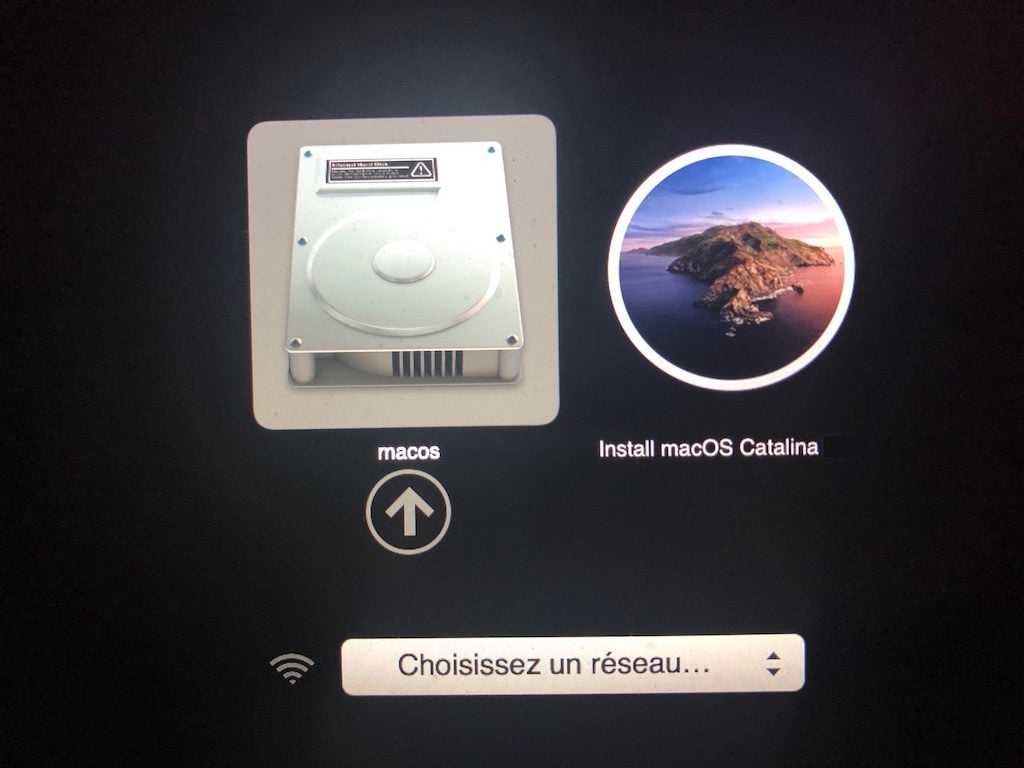To reinstall macOS in macOS Recovery mode: Step 1: Make sure your Mac is connected to a stable Internet within all the following steps. Step 2: Identify it's an Intel or M1 Mac, and immediately do one of the followings. Press and hold Command + Option + R.This allows you to reinstall the latest version of macOS that is compatible with your Mac. Clean Install macOS Catalina Using Internet Recovery Method. Power down your Mac completely. Power your Mac back on and hold down the Command + Option + R keys until you see a. Set a name for the disk, e.g. 'macOS', and leave the other options to their defaults (they are Format: APFS for macOS Big Sur and Mac OS Extended (Journaled) for macOS Catalina, with the Schema being GUID Parition Map for both). Once you've finished erasing the largest QEMU HDD, close the Disk Utility dialog. Install macOS in the virtual. Now, run your apps on macOS Catalina and check if everything goes well. If the downgrade still causes problems, restart your mac or reinstall Catalina/Mojave to fix it. What If Data Lost/Deleted after macOS Big Sur Downgrade? But what if we still got data lost or deleted after macOS Big Sur downgrade to Catalina or Mojave? I installed Big Sur on top of Catalina and there have been no problems whatsoever. I would not worry about something going wrong. A modern OS whether it's macOS, Linux or Windows 10 all incorporate fail safe measures to insure little to nothing goes wrong.
Big Sur has just arrived in November, and we are sure that some users installed it without doubts but regret later. Maybe you don’t like the new features of this system or some apps do not work correctly, or maybe you’ve got trouble with Big Sur and it forces you to downgrade your MacOS back to Catalina. In fact, it’s possible to do this but we want to say it is not so easy.
In our article, we’ve gathered useful hints on how to downgrade the OS of the Mac to a previous one. Keep reading to do it without problems and enjoy working on your computer!
Why Do Users Wish to Downgrade?

Big Sur contains some new features and new changes to be a good update to the Mac OS. However, some users prefer to stay with Catalina just because they are used to that operating system or discovered some troubles with any new updates. Here are the main reasons why some people wish to downgrade their Macs:
- Some apps don’t work correctly, as an example, you may discover that your current version of Corel Draw doesn’t work anymore.
- Some people may need Catalina OS for their recurrent job, and they are not ready to change the operating system.
- Some users may try a new operating system but later they wish to downgrade just because they don’t like it and prefer the older version.
How Do I Reinstall Os X Catalina From Big Sur
Please be informed that downgrading is not similar to a process if you would find a Catalina version and reinstall it on your device. When the Mac is having the newest OS version, the entire process of downgrading will be different but it’s still possible.
Keep reading to see the main hints to downgrade the computer.



1. Backup The Device At Start
The very first step is to back up the computer. The downgrading will eventually erase everything from its hard drive, and it means you have to create backups to keep all your important files safe. Check out if you have copied all the needed files and didn’t forget anything.
Reinstall Macos Catalina From Big Sur Windows
Please be informed that you don’t need a Time Machine for making backups just because if you recover your files from a backup made with a Time Machine in the Big Sur system, you will receive Big Sur files. Just use a reliable backup tool to back up all the needed recent documents.
If you create backups regularly, then you may find an older backup made with Catalina Time Machine, and this is just an ideal situation. It means you may recover the Mac and then copy on it all the needed documents from those backups.
Reinstall Macos Catalina From Big Sur Mac
Sometimes it’s easy to do everything without any backups if you store all the important files and documents in iCloud. Please remember that with a Time Machine it’s possible to backup settings too that are very comfortable for recovering.
2. Downgrade Your Mac
Reinstall Macos Catalina After Big Sur
If you’ve updated your Mac’s OS to Big Sur but now want to change the OS due to any reason, it’s possible to downgrade back without worries. In fact, you may use two variants below:
- Recover the device from a Time Machine backup made with Catalina OS. Check out that you have a full backup of the device’s system you had before it was upgraded. Please remember that all files you’ve saved since your computer was upgraded will be deleted If you still need any files, don’t forget to save them on iCloud or the flash drive.
- Reinstall your OS with a bootable installer. Of course, it means you have to delete everything from the hard drive. You may lose all your information if you don’t create any backups or save it anywhere before. Please remember that you should not use a Time Machine in Big Sur because it’s not effective at all.
How To Downgrade Big Sur To Catalina
As you see, downgrading is not a very complicated thing but you must be very attentive to not lose any important files.